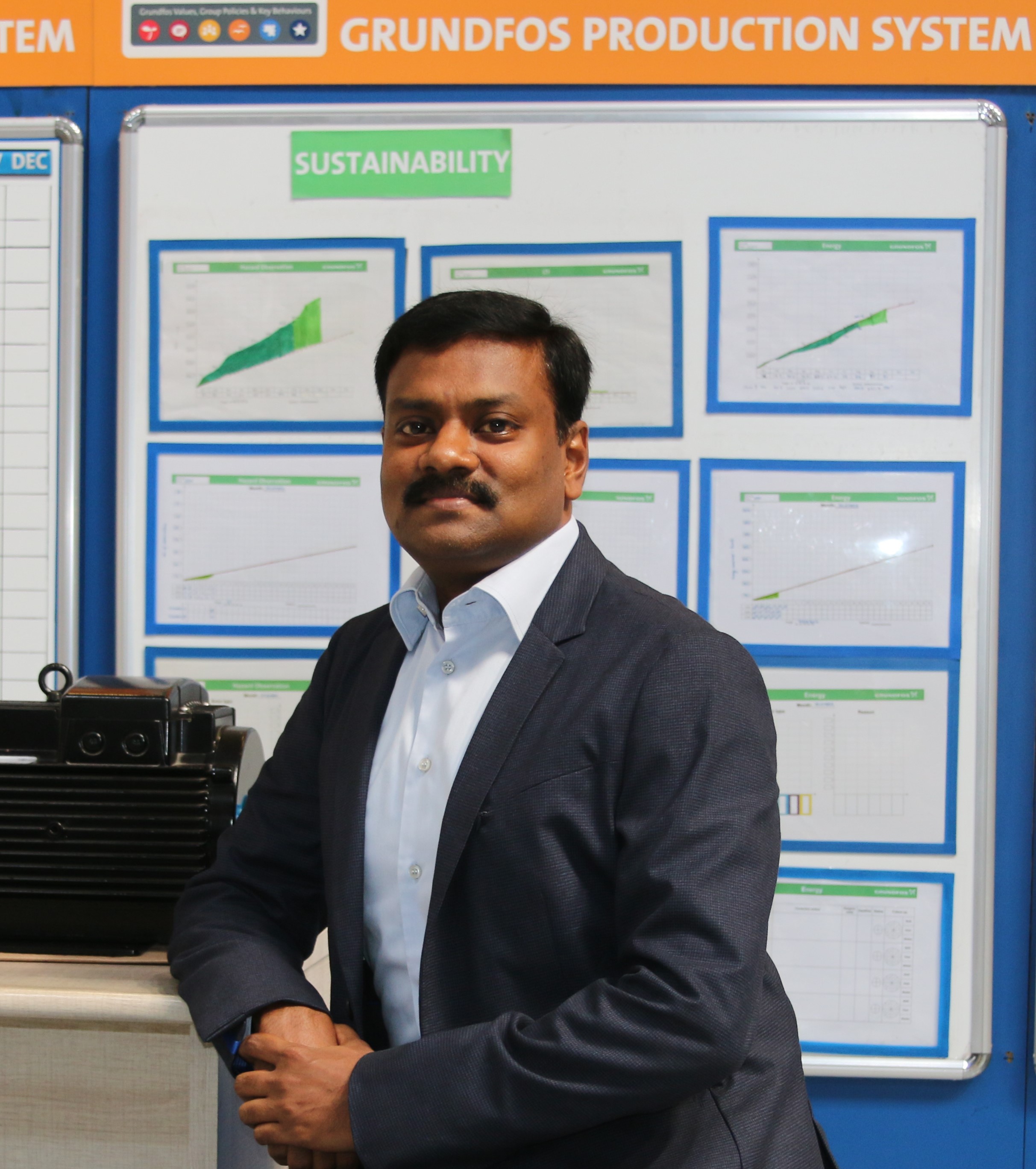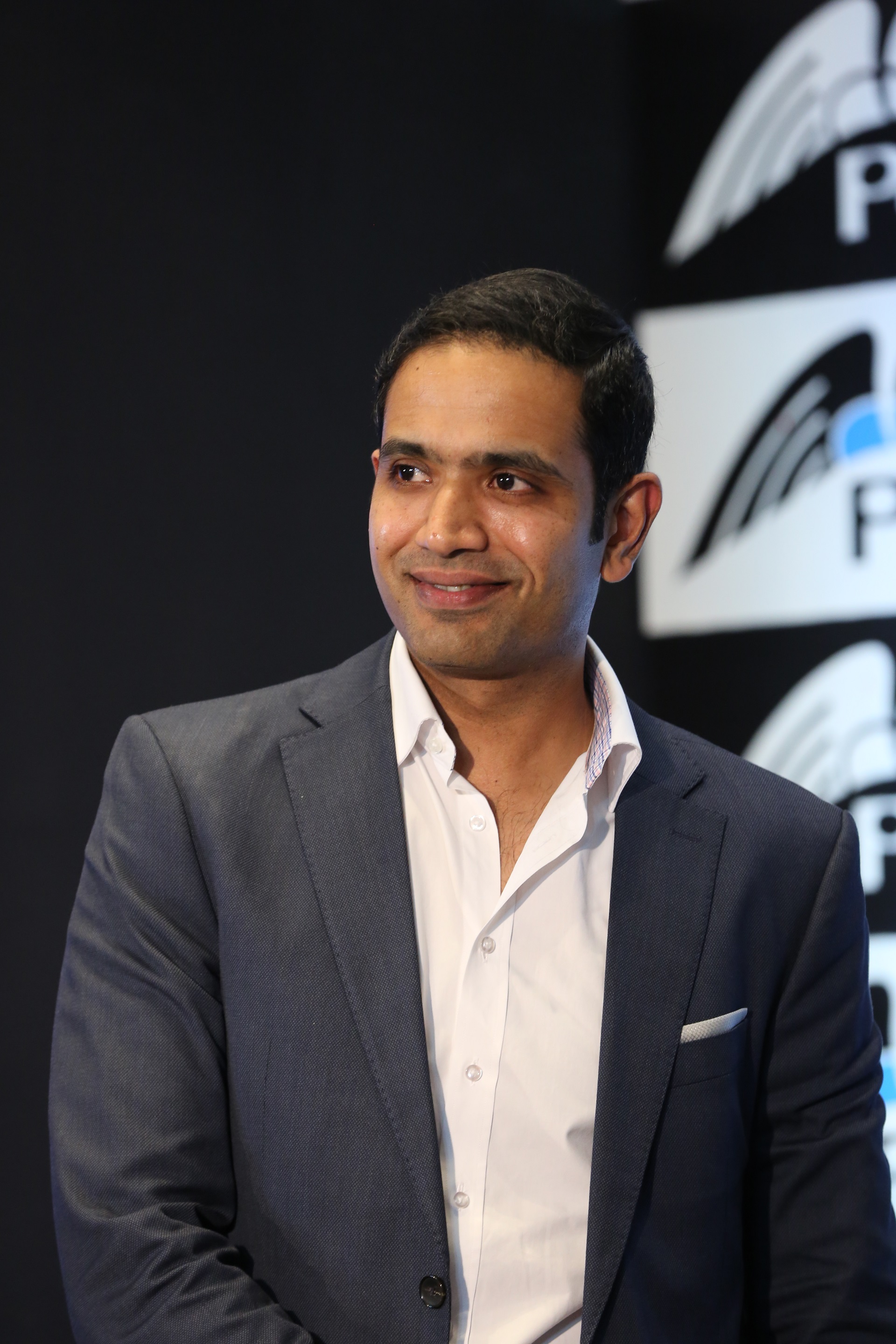Finance Minister Nirmala Sitharaman has presented the Union Budget 2021-22 in Parliament. Significant changes to the taxation process, Sitharaman announced the scrapping of income tax for senior citizens under certain conditions, new rules for removal of double taxation for NRIs, and a reduction in the time period of tax assessments among other measures. Startups will get an extension in their tax holiday for an additional year. Sitharaman also announced that the advance tax liability on dividend income shall arise after the declaration of payment of dividend. At the conclusion of her speech, Sensex was at 47451.62, up 1165.85 points. Let’s look at the reaction from Industry Experts:
Udaya Bhaskar Rao Abburu, CEO & Managing Director, iRAM Technologies

We expected more from the Union budget 2021-22. While the focus has been on infrastructure, FM has allocated Rs. 93,400 Crores for roads only, no allocation has been made for the development of Smart Cities. Though FM talked about double-digit growth of the manufacturing sector for India to become a $5 Trillion economy, no roadmap has been laid out for the same. We also need more clarity on how Rs. 2217 Crores allocated for setting up 42 Urban centers to tackle the pollution problem will be used. Change in definition of Small companies may benefit some Small-scale companies, provided more support for Small scale companies are announced.
Lalit Mehta, Co-founder & CEO of Decimal Technologies

The budget presented seems to tick most boxes that India needs today post COVID. The promise on CAPEX should help in generating employment and also solve for long-term growth objectives. The six pillar focus will set the foundation for growth in coming years and make us better prepared for difficult situations like the COVID.
Some of the items that would see effect faster than others would be the FDI cap increase for Insurance, which will surely lead to a better-capitalized Insurance sector and better reach of Insurance to the masses. Privatization of PSBs is a welcome move. It should help in making the banking sector more agile and oriented towards digital growth. This should lead to a few acquisitions of PSBs by private lenders. Hopefully, this will increase the reach of the private sector to rural markets and will enable these markets with new products and a digital ecosystem. The fintech hub in the GIFT city is a great step towards enabling the fintech industry and shows the government’s recognition of FinTech as a significant play in the financial sector. This should set the road for the creation of the required regulations and frameworks for FinTech to work with conventional lenders and banks.
Fiscal deficit and achievement of divestment targets is something that needs to be under close watch. Any slippage on any of these can put a spanner in some other initiatives. Overall a positive budget that tries to balance between long term and immediate needs.”
Ashraf Rizvi, Founder & CEO of Digital Swiss Gold & Gilded

“The Sensex witnessing a rise of over 4.5% signals the positive sentiment towards the Union Budget 2021. The gold and silver market received good news with a rationalization of import tariffs. The reduction in import duty on gold and other precious metals from 12.5 percent to 10 percent, will make jewelry cheaper in the domestic market for the buyer, as India continues to be the second-largest buyer of gold in the world. Moreover, the announcement of SEBI as the regulator for gold exchanges in India is also a welcome move as it hints at deeper regulation of digital transactions of the yellow metal, which is critical to earning consumer trust. Overall, a very positive shot in the arm for the Indian economy that looks to help India and its citizens recover in 2021 after a very difficult 2020. We at Digital Swiss Gold and Gilded will continue to ensure savings to our customers so that more investors consider gold as a critical asset in their investment portfolio.”
Venkatraman Narayanan, MD & CFO, Happiest Minds

The budget has maintained continuity and consistency and in line with the themes of ease of doing business, simplification, transparency, and manage effective delivery through digital channels. As a digital company hearing announcements around leveraging digital technologies like video conferencing, e-assessments, e-invoicing, AI, and ML for governance, incentives for digital transactions are heartening.
Honorable FM has maintained the course on simplification and consolidation of laws with a specific focus on rewarding the honest. The aspect of supporting the economy with increased spends on Infra, health, farming, and education are welcome. Inclusion and women empowerment into the larger Aatmanirbhar objectives of the government are laudable. I see lots of support for the economy and a V-shaped recovery for the economy. From the IT industry perspective, quite a few relaxations on compliance, laws, and also support came from the Government during the Pandemic. Hope this approach will continue.
George Rajkumar, Country President, Grundfos India

Grundfos India welcomes the additional allocation towards the Jal Jeevan Mission (JJM) by the Department of Drinking Water and Sanitation announced by the honorable Finance Minister. Given that the budget had a very sharp focus on the sustainable economic growth of and the nation overall, it was great to see the focus on one of the crucial issues, that is urban water supply. Keeping the growing water crisis in mind, the decision to dedicate an INR 2.87 lakh crore outlay over 5 years, for the renowned JJM, which is aimed at a universal water supply in all 4,378 urban local bodies, with 2.86 crore household tap connections and liquid waste management in 500 AMRUT cities is a good one. The move to include liquid waste management backed by the budget allocation of ₹ 1,41,678 crore for Urban Swachh Bharat Mission 2.0 is a great step forward to holistically look at sustainable water and wastewater management in India. We hope that this allocation will encourage public and private players to develop innovative solutions for JJM and provide an opportunity to contribute to resolving water issues in the country through advanced water technologies. Furthermore, knowing the fact that we are rich in renewable sources, it is a rational decision to evidently level up the renewable energy allocations, by proposing an additional infusion of INR 1,000 crore to the Solar Energy Corporation of India and 1,500 crores to IREDA continuing to build on a solarized future.
Suman Reddy, managing director, Pega India

As the first budget during the recovery of the pandemic, we are optimistic that the slew of measures announced on healthcare and infrastructure will provide impetus to the economy. The agenda to focus on the six pillars including infrastructure, innovation and R&D clearly sets India on a path of recovery.
In a significant break from tradition, Government’s Atmanirbhar package focuses on increasing spend towards the creation of jobs and rural development, generous allocations for development schemes, handing more monetary benefits to the common man, and easing rules to attract foreign investments. Enhancing the digital backbone of the country, the announcement on the fintech hub at the GIFT -IFSC and R&D investment of 50,000 crores over 5 years will ensure that the overall research ecosystem of the country is strengthened with a focus on identified national priority thrust areas. The move to establish a National Digital Educational Architecture (NDEAR) in the context of a Digital First Mindset to ensure digital learning, as well as planning infrastructure, will empower the youth of the nation.
Sudhindra Holla, Director, Axis Communications, India & SAARC

We are upbeat on the six pillars of the government agenda including a focus on infrastructure, innovation, and R&D that is all set to strengthen India’s power as a global digital hub. We are optimistic about the renewed focus on road safety with an advanced traffic management system with speed radars, variable message signboards, GPS enabled recovery vans along with the outlay of ₹ 2.28 lakh crores for developing the highways, roads, and railways. Good to see pertinent steps taken to revitalize the economy with a key focus on allocating budget for healthcare, metro railways, ports, airports, and logistics to boost urban infrastructure. These, in turn, will be stepping stones towards invigorating Smart Cities planning and urban development and help in generating more jobs.”
Nikhil Rungta, Country Manager, India, Verizon Media

Taking insights from the learning curve of Covid-19, the government has done well to take appropriate measures to improve the lives of citizens and pave way for economic recovery.”
“This is a ‘get well’ budget with an expansionary outlook and focused on growth. Given the times it might not be a radical budget, but it is practical and thoughtful, which will propel consumption and growth of the business. This budget has also rightly signaled the need for greater inclusion in India’s workforce. Women being allowed to work in all sectors and in night-shifts with adequate protection, and social security benefits extended to gig workers will provide an impetus for women to step up their contribution towards Aatmanirbhar Bharat.”
Vamsi Krishna, CEO & Co-founder, Vedantu

The National Education Policy has been a strategic move towards guiding the development of India’s education. To strengthen the policy further, this Union Budget is focusing on initiatives like National Digital Educational Architecture (NDEA) which will provide a diverse education eco-system for the development of digital infrastructure, educational planning, governance, and administrative activities. The complete shift from using assessments to not only judge the cognitive levels of the learner but also using it as an opportunity to identify the unique strengths and the potential, is a student-centric approach that will lead to the holistic development of a child and provide them a greater edge, globally. Further, I would like to see more investments & budget allocation go into the education sector to enhance it with more trending technologies that will make education accessible to students in the farthest corners of the country.
Balajee Sowrirajan, Managing Director, Samsung Semiconductor R&D

We are very optimistic with the focus given on Innovation and R&D being identified as one of the key pillars, I believe ‘Design for India’ will gain momentum, and localization of product designs will lead towards an aspirational and Innovative India. These will lead to the next phase of inclusive growth with increased emphasis on skilling and job creation. Furthermore, with a significant increase in Capex from 4.39 lakh crore to 5.54 lakh crore, the Atmanirbhar Bharat Initiative will be strengthened with more focus on domestic manufacturing and production, laying the foundation for the 5 Trillion Dollar Economy by 2030.
Pramod Thota – President, FMC India

It is encouraging to see a progressive thought process towards the agriculture sector, with a sharp focus on technology and sustainability. The increased availability of credit – INR 16.5 lakh crores and extension of the SWAMITVA scheme to cover all states and UTs will benefit farmers and increase access to credit facilities. The availability of funds for APMCs to augment their infrastructure, investment of INR 1,000cr towards Pradhan Mantri-Kisan Urja Sanrakshan Evam Utthan Mahabhiyan, and integration of 1,000 more mandis in the eNAM marketplace will help towards enhancing and leveraging technology in agriculture. Initiatives such as doubling of the budget for micro-irrigation to INR 10,000 cr will help promote sustainable agriculture. The government’s announcement of withdrawing an end-use-based concession on denatured ethyl alcohol will aid a significant number of farmers producing rice, wheat, barley, corn, sorghum, sugarcane, and sugar beet crops. The government’s intervention in pulses and cotton purchases have helped farmers in increasing overall receipts to over 40 times from 2013-14 till 2020-21. We are hoping for a seamless implementation of the initiatives, to further catalyze the growth of the Indian agro-economy.
Kapil Bardeja, CEO & Co Founder, Vehant Technologies

Governments decision to provide Rs. 15,700 crores to support the MSME sector would not only boost the confidence of small industries but will also strengthen the Government’s Make in India, Vocal for Local and Atmanirbhar Bharat visions, besides making a remarkable contribution to employment generation and will make Indian industries more efficient and surpass the global standard. Given the current times, the budget is focused on India’s growth and we anticipate this should act as a multiplier effect to the Indian MSME ecosystem. Overall, the budget is well designed to give a boost to local manufacturing and improve the infrastructure of the country.
Dilip Modi, Founder, Spice Money

It was encouraging to see the ‘Sankalp of Aatmanirbhar Bharat’ as well as inclusive and sustainable development come into focus right at the beginning of Financial Minister Nirmala Sitharaman’s budget speech. We had hoped for a boost to digital as it has the ability to bridge the gap between haves and have-nots when it comes to access to financial services. This was evident when the lockdown hit last year when the digital financial infrastructure came to the rescue of millions of citizens. So, the incentive of Rs. 1,500 crore for digital payments is a move in the right direction. We are eagerly waiting to see what the scheme entails and how the industry can benefit from it. We hope a part of the fund goes towards fostering the banking correspondents (BC) network by introducing reimbursement schemes or alternatives to zero merchant discount rates (MDR) which has hampered the growth of the network and the payments ecosystem. We also expect the scheme to have provisions for device subsidy to strengthen the micro ATM infrastructure in rural India. We believe it will accelerate the transformation towards an Aatmanirbhar, Digital India, and bring about financial inclusion for underserved parts of India.
We are also excited to see the innovations that emerge out of GIFT International Financial Services Centre to support rural financial infrastructure to be on par with urban India. This is in alignment with Spice Money’s vision to bring innovation in rural fintech and uplift the underserved parts of India.
Ravichandran Purushothaman, President, Danfoss Industries Pvt. Ltd.

Industry & Corporate
The Union Budgets’ provision for doubling the MSME allocation and setting aside Rs 15,700 crore in FY22, is a testament to the nation’s resolve towards strengthening its local manufacturing base and realizing its vision for a self-reliant India. Further, the Rs. 1.97 lakh crore allocated over the next 5 years for Production Linked Incentive Schemes to create manufacturing global champions for an Aatmanirbhar Bharat Will nurture size and scale and create jobs for youth. The enhanced outlay of 1,18,101 crores announced for the development of the Roads and Highways infrastructure would benefit the corollary industries like cement, steel, and transportation, showcasing the potential for recovery from the slowdown presented by the lockdown. In light of the government’s move towards reducing air-pollution and the impetus provided to the renewable energy sector, sustainability-oriented products can be effective drivers of maximizing energy efficiency and a big contributor to the reduction in air pollution which was also the key highlights from the budget today. The budget has attempted to strike a balance between supporting growth and a modest deficit reduction. The budget addresses issues of supply scarring and the demand constraints across all industries, and a set of fiscal and tax relief measures that would go a long way in boosting aggregate demand.
Infrastructure, Sustainability & Skill Development
The Union Budget 2020-21 heralds a positive turn in the infrastructure ecosystem of the country. The proposed investment on various infrastructure development projects under the National Infrastructure Pipeline will set India on the right path towards improving the ease and standard of living across major Indian cities. Further, the investments in infrastructure will be pivotal in enhancing the nation’s manufacturing prowess, thereby acting as a catalyst in India’s journey towards becoming a powerhouse for local production.
The allocation of INR 1000 crores and 1500 crores for the solar and renewable energy sectors respectively is indeed a commendable move by the center for achieving the nation’s targets for Renewable Energy. The budgetary allocations towards reducing air pollution is a welcome step as it will incentivize firms to invest in low carbon technology and fasten their transition towards carbon neutrality.
Added to this, the National Skill Development Agency’s special emphasis on infrastructure-focused skill development and the move to include young engineers in the Project Preparation Facility for upcoming projects will play a pivotal role in addressing the issue of skill gap and job creation among the nation’s workforce.
Mr. Ashish P. Dhakan, MD & CEO, Prama Hikvision India Pvt. Ltd.
 The Union Budget FY 2021-22 is a transformative budget with positive resolve for India to grow further with a vision of the AtmaNirbhar Bharat Abhiyan that compliments the ‘Make-in-India’ initiative of the Government. AtmaNirbhar Bharat is an expression of 130 crore Indians, who have full confidence in their capabilities and skills. The Union Budget has identified the six pillars of Atmanirbhar Bharat's vision. On behalf of Prama Hikvision, we welcome the progressive and visionary budget and look forward to economic growth and stability.
The Union Budget FY 2021-22 is a transformative budget with positive resolve for India to grow further with a vision of the AtmaNirbhar Bharat Abhiyan that compliments the ‘Make-in-India’ initiative of the Government. AtmaNirbhar Bharat is an expression of 130 crore Indians, who have full confidence in their capabilities and skills. The Union Budget has identified the six pillars of Atmanirbhar Bharat's vision. On behalf of Prama Hikvision, we welcome the progressive and visionary budget and look forward to economic growth and stability.
The budget has sincere intent to provide momentum to strengthen local manufacturing capabilities. The Production Linked Incentive scheme (PLI) is a welcome move by the government. The review of the customs duty structure is clearly seen as a move towards promoting domestic manufacturing. We hope that the review of the customs duty structure will be done after extensive consultation with the key stakeholders.
The move to strengthen the overall research ecosystem to boost innovation and R&D in the country, an outlay of Rs 50,000 crore, is being announced, for National Research Foundation. It is a big step for accelerating innovation and R&D in India. The budget clearly shows the government’s megathrust on developing Infrastructure, Road Transport, Waterways, Airports, Railway, Metro Rail, ‘MetroLite’ and ‘MetroNeo’. It is commendable for its inclusive growth agenda, overall a gradual step toward Atmanirbhar Bharat.
Narayan ‘Naru’ Ramamoorthy, Chief Revenue Officer, Global PayEX
At the outset, it is laudable that the Union Budget 2021-22 lays an increased emphasis on the use of data analytics, artificial intelligence, and machine learning across industries. We welcome the Government of India’s move in taking definitive steps towards using the power of digital technologies and boosting the fintech and startup ecosystem through initiatives such as the fintech hub in Gujarat International Fintech Tech (GIFT). The benefits accrued through the allocation of Rs. 1,500 crores for promoting digital modes of payment as well as the increased tax audit limit for those who carry 95% of their transactions digitally will enable businesses, especially MSMEs to digitize their entire value chain and drive exponential impact on key business levers – innovation, growth, and efficiency. Add to it, the proposed setup of Asset Reconstruction Company (ARC) and Asset Management Company (AMC) for stressed assets, which will help accelerate the much-needed credit line in B2B payables and receivables financing from the banking system. Further, the allocation of INR 3000 crore for skill development and facilitating a National Digital Educational Architecture (NDEAR) within the context of a Digital First Mindset will help bridge a sizeable technological skill gap in the country and offer the right engine of incessant growth, while setting the foundation for India’s future in the right direction.
Sanjay Jalona, CEO & MD, LTI (L&T Infotech)

We welcome the increased focus on Innovation and on ease of doing business. This budget appears to have set the right pace for India’s journey to a digital-first approach. From an IT services perspective, the industry is facing intense global competition and needs tax incentives and digital infrastructure support to ensure seamless work from anywhere ecosystem, which is the new normal. This is a critical requirement for the sector that employs nearly 4.5 million professionals, contributes 8% of the country’s GDP, has created high-quality jobs during the pandemic, and is the face of Brand India across the world.
Hadi Riachi, Market Head, Swiss Re India Branch

People
The people-focus of Budget 2021 stands out and is very welcome in the post-COVID economic and social recovery of the country. The focus on human capital, inclusive development, and the holistic approach towards Health, through strengthening the three areas of Preventive, Curative, and well-being, are promising. The 137% increase in the total health budget outlay itself speaks to the government’s focus on building societal resilience.
Development and Environment
Another highlight of the Budget is the focus on infrastructure expansion coupled with that on building resilient infrastructure in terms of solar energy. India has tremendous potential in solar and the proposed capital infusion (to the tune of 2500 crores) and capacity addition (to the tune of 7,500 megawatts) are very encouraging as the country continues to take giant strides in development. The increased outlay on roadways and railways infrastructure spending and the creation of a development finance institution is very welcome.
Closing the Protection Gap
The opening up of FDI limit from 49% to 74% for insurance companies and allowing foreign ownership and control with safeguards speak to the government’s focus on accelerated development and to India’s overall appetite for growth. The re/insurance industry can play a vital role in supporting the private and public sector achieve sustainable development through i) closing the health and mortality protection gap, ii) investing in infrastructure resilience and iii) ensuring the integration of insurance in a holistic digital ecosystem.








